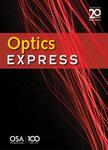版权所有:内蒙古大学图书馆 技术提供:维普资讯• 智图
内蒙古自治区呼和浩特市赛罕区大学西街235号 邮编: 010021

作者机构:Univ Chicago Dept Radiol Chicago IL 60637 USA IIT Dept Biomed Engn Med Imaging Res Ctr Chicago IL 60616 USA
出 版 物:《OPTICS EXPRESS》 (Opt. Express)
年 卷 期:2010年第18卷第10期
页 面:10404-10422页
核心收录:
学科分类:070207[理学-光学] 07[理学] 08[工学] 0803[工学-光学工程] 0702[理学-物理学]
基 金:National Science Foundation (NSF) Awards [CBET-0546113, CBET-0854430] NIH [CA120540, EB000225, S10 RR021039, P30 CA14599] Illinois Department of Public Health Ticket for the Cure Grant NIH SPORE [CA125183-03] U.S. Department of Energy, Office of Science, Office of Basic Energy Sciences [DE-AC02-06CH11357] Directorate For Engineering Div Of Chem, Bioeng, Env, & Transp Sys Funding Source: National Science Foundation
主 题:Image processing Image reconstruction Reconstruction algorithms Refractive index Speckle noise Three dimensional imaging
摘 要:Propagation-based X-ray phase-contrast tomography (PCT) seeks to reconstruct information regarding the complex-valued refractive index distribution of an object. In many applications, a boundary-enhanced image is sought that reveals the locations of discontinuities in the real-valued component of the refractive index distribution. We investigate two iterative algorithms for few-view image reconstruction in boundary-enhanced PCT that exploit the fact that a boundary-enhanced PCT image, or its gradient, is often sparse. In order to exploit object sparseness, the reconstruction algorithms seek to minimize the l(1)-norm or TV-norm of the image, subject to data consistency constraints. We demonstrate that the algorithms can reconstruct accurate boundary-enhanced images from highly incomplete few-view projection data. (c) 2010 Optical Society of America